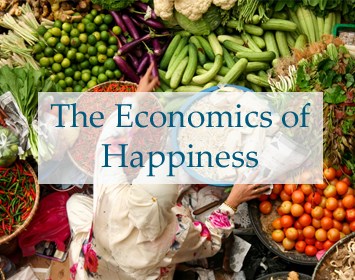Inauguration 2017 Special Coverage w/ Angela Davis, Naomi Klein, Ralph Nader & More
Menu

Special coverage in the Trump Era
From Public Citizen's Corporate Presidency site: "44 Trump administration officials have close ties to the Koch brothers and their network of political groups, particularly Vice President Mike Pence, White House Legislative Affairs Director Marc Short, EPA Administrator Scott Pruitt and White House budget director Mick Mulvaney."
Dark Money author Jane Mayer on The Dangers of President Pence, New Yorker, Oct. 23 issue on-line
Can Time Inc. Survive the Kochs? November 28, 2017 By Jane Mayer
..."This year, among the Kochs’ aims is to spend a projected four hundred million dollars in contributions from themselves and a small group of allied conservative donors they have assembled, to insure Republican victories in the 2018 midterm elections. Ordinarily, political reporters for Time magazine would chronicle this blatant attempt by the Kochs and their allies to buy political influence in the coming election cycle. Will they feel as free to do so now?"...
"Democracy in Chains: The Deep History of the Radical Right’s Stealth Plan for America" see: our site, and George Monbiot's essay on this key book by historian Nancy MacLean.
Full interview with The New Yorker’s Jane Mayer March 29, 2017, Democracy Now! about her article, "The Reclusive Hedge-Fund Tycoon Behind the Trump Presidency: How Robert Mercer Exploited America’s Populist Insurgency."
Democracy Now! Special Broadcast from the Women's March on Washington
The Economics of Happiness -- shorter version
Local Futures offers a free 19-minute abridged version of its award-winning documentary film The Economics of Happiness. It "brings us voices of hope of in a time of crisis." www.localfutures.org.
What's New?
March 20, 2011
Learning From Japan's Nuclear Disaster
"
Friday, March 18, 2011
As heroic workers and soldiers strive to save stricken Japan from a new horror--radioactive fallout--some truths known for 40 years bear repeating.
An earthquake-and-tsunami zone crowded with 127 million people is an unwise place for 54 reactors. The 1960s design of five Fukushima-I reactors has the smallest safety margin and probably can't contain 90% of meltdowns. The U.S. has 6 identical and 17 very similar plants.
Every currently operating light-water reactor, if deprived of power and cooling water, can melt down. Fukushima had eight-hour battery reserves, but fuel has melted in three reactors. Most U.S. reactors get in trouble after four hours. Some have had shorter blackouts. Much longer ones could happen.
Overheated fuel risks hydrogen or steam explosions that damage equipment and contaminate the whole site--so clustering many reactors together (to save money) can make failure at one reactor cascade to the rest.
Nuclear power is uniquely unforgiving: as Swedish Nobel physicist Hannes Alfvén said, "No acts of God can be permitted." Fallible people have created its half-century history of a few calamities, a steady stream of worrying incidents, and many near-misses. America has been lucky so far. Had Three Mile Island's containment dome not been built double-strength because it was under an airport landing path, it may not have withstood the 1979 accident's hydrogen explosion. In 2002, Ohio's Davis-Besse reactor was luckily caught just before its massive pressure-vessel lid rusted through.
Regulators haven't resolved these or other key safety issues, such as terrorist threats to reactors, lest they disrupt a powerful industry. U.S. regulation is not clearly better than Japanese regulation, nor more transparent: industry-friendly rules bar the American public from meaningful participation. Many presidents' nuclear boosterism also discourages inquiry and dissent."...
Read full article here, Rocky Mountain Institute
(www.rmi.org).

